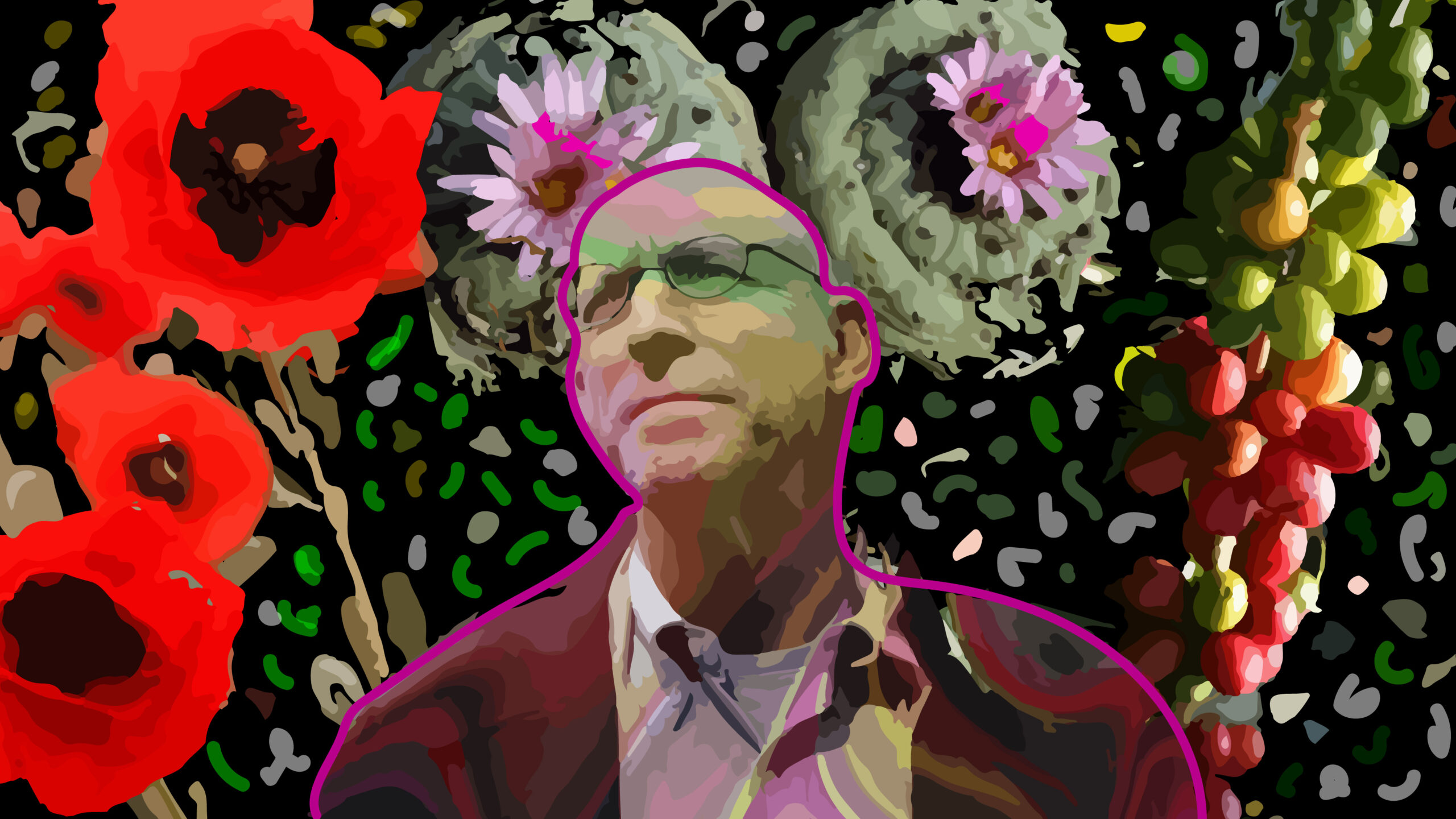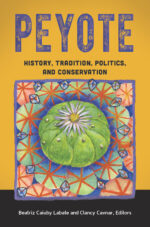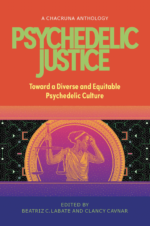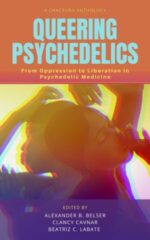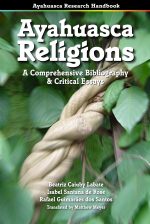- After 2024, the Scenario for Psychedelic Therapies Can Only Improve - January 16, 2025
- Symposium in Brazil Debates Psychedelics at a Political Crossroads - December 13, 2024
- Conference in Rio Defends Psychedelics in Public Health - December 11, 2024
I write this review of This is Your Mind on Plants, by Michael Pollan, after three mugs of coffee and two cups of black tea. It’s nine a.m. and I’m already setting an example of addiction to the most widely used psychoactive substance in the world: 90% of the planet’s population use caffeine, tells us the author of yet another best seller, How to Change Your Mind.
Never mind the repeated marketing appeal to “your mind.” In spite of dealing with what happens in our heads, the book would fit awkwardly in a bookshop self-help shelf. Its focus lies not on copious advice on how to address mundane difficulties, it deals instead with three substances with paradoxical effects on the mind (opium, caffeine, and mescaline) and with a mindboggling question: Why do we intoxicate ourselves?
Out of coherence with the subject of my blog, Virada Psicodélica, and Pollan’s previous book, the mental sharpness provided by loads of the morning stimulant recommends that I start with the psychedelic mescaline, the third and last plant to be investigated in the volume. It is also a way of paying tribute to the first “entheogen” (more about the term below) to appear prominently in Western literature with The Doors of Perception by Aldous Huxley, in 1954.
Pollan handles the compound originally extracted from the peyote cactus, (Lophophora williamsii) and San Pedro, or wachuma (genus Trichocereus), with two sharp instruments in the journalist’s toolbox: thorough research and testimony of personal experiences.
Join us for our next conference!
Pollan handles the compound originally extracted from the peyote cactus, (Lophophora williamsii) and San Pedro, or wachuma (genus Trichocereus), with two sharp instruments in the journalist’s toolbox: thorough research and testimony of personal experiences. The results obtained with the former, though, differ somewhat from those presented in How to Change Your Mind, as they dwell less in information about pharmacology, clinical trials, and the neuroscience of psychedelics and make more room for history and anthropology.
Mescaline, writes the author, is probably the most ancient psychedelic employed by humans. Its ancestral use by traditional peoples in the southern part of North America and the Andes may have begun millennia ago. Already, in the seventeenth century, it had been forbidden by Spanish colonialism: In 1620, Mexican Inquisition declared peyote a “heretical perversity” and, by 1779, had prosecuted 90 cases against users in the New World.
As usual, prohibition had managed only to relegate the psychedelic cactus to the underground, and it would return to the surface with repressed strength a century later, as the sacrament of a new autonomy-oriented religion. After decimation of the original inhabitants of North America, climaxing in the massacre of the Lakotas at Wounded Knee (1890), Indigenous peoples confined to reservations founded the syncretic Native American Church (NAC), a denomination also described as practicing “peyotism.”
Here, the reader is presented with the boldest thesis in the book, sort of an oblique answer to the underlying question as to why we humans intoxicate ourselves: Psychoactive molecules in plants—generally, bitter alkaloids with flavor that may have evolved as an adaptation to deter herbivores—get caught in an spiral of coevolution with humans; a partnership favoring the propagation of the former and providing the latter with resources to intensify facets of consciousness that could help them to stay alive. In peyote’s case, it allowed for cultural survival after the trauma of colonization.
At the center of peyotism are healing rituals that take place in a teepee around a fire. Pollan tries to uncover what happens inside the tent under the influence of the cactus, but faces the impossibility of traveling caused by the COVID-19 pandemic and the resistance of practitioners to the cultural appropriation of their sacred ceremony by a white man, even if he is an anthropologically-correct journalist. Pollan then has to make do with another type of ceremony, very New Age, inspired by Andean practices.
The Native American Church’s refusal to lift the teepee’s cover led to a skirmish with Decrim Nature, reports Pollan. This movement has been successful in convincing state and local authorities in the U.S. to decriminalize so-called “plants of power,” also known as “entheogens” (“revealing the interior divinity”) or, at least, removing them from law enforcement priority.
Even though Decrim Nature made an effort to show respect for traditional uses of psychoactive cacti, mushrooms, and other plants, in order to preserve traditional and Indigenous users’ religious freedom, the NAC asked the movement to remove peyote from its list of organisms whose power is not for the State to regulate. The NAC fears that peyote, already threatened in the few places where it grows naturally, might completely disappear from its habitat if the plant becomes more popular in the wake of the psychedelic renaissance.
Pollan tells that his first encounter was with synthesized mescaline in its chemical purity. Mescaline has been synthesized since 1919, after being isolated from cacti in 1897 (the Native American Church doesn’t object to lab synthesis, only to the consumption and cultivation of the plant by non-native practitioners). The author describes his own experience echoing the overwhelming amplification of perception already portrayed by Huxley, and offers some hints as to the liberation potential Native Americans had tapped into since the nineteenth century.

Mescaline works slowly in the brain, and its psychoactive effects can last for 14 hours. After waiting for more than an hour for them to kick in with a book in his hands, Pollan tells that, at a certain point, reading had become something of an absurd and useless activity. He enjoyed being flooded with the surrounding reality, with eyes only for what was at hand or in his field of vision, with no need whatsoever for anything besides contemplation.
These substances also sharpen the vision, intensifying colors and details, especially of natural beings and objects that may appear shrouded in a transcendental meaning to which the psychonaut gains access by means of the substance.
The narrated experience is not unfamiliar to those who have already tripped on psychedelics such as LSD or mushrooms (psilocybin). These substances also sharpen the vision, intensifying colors and details, especially of natural beings and objects that may appear shrouded in a transcendental meaning to which the psychonaut gains access by means of the substance.
However, from Pollan’s description, one crucial difference emerges: plunging into mescaline appears to allow access to the things themselves, to the wonder and awe of their sheer existence. And not so much to some revealed meaning, emanated or projected from the mind itself, something that a neuroscientist might refer to as the “aberrant salience” occasioned by psychedelics.
Among the insights collected from peyotism practitioners, the journalist heard more than once the depiction of the cactus as a mirror, or as an entity that sees inside or through the person in search of healing and ends up confronting her with what she needs to see. In other words, the reality of biographical nuts and bolts (including trauma) as they actually are, not as we explain them or encumber them with meaning and suffering, an encounter which, in turn, would facilitate acceptance and liberation, individually or collectively, in a religious context.
This joining of the personal effect (biographical, mental) with the social impact (cultural, historical) is not trivial, but Pollan weaves the threads in a convincing and compelling manner. With subtlety and nuance, he proceeds at a great distance from presumptuous narratives such as that of the “stoned ape” hypothesis promoted by Paul Stamets, among others, in order to explain, in a pretty unverifiable manner, the very emergence of human consciousness as the fruit of coevolution with magic mushrooms.
True, the attribution of historical and societal superpowers to psychoactive compounds works better when applied to mescaline’s involvement in the advent of the Native American Church. In the case of caffeine-laden coffee (Coffea sp.) and black tea (Camellia sinensis), their emergence as globalized beverages in parallel with the Industrial Revolution and the Enlightenment might not amount to much more than that, coincidence.
Anyway, indications gathered by Pollan in academic oeuvres do confer some credence to the idea that the stimulant caffeine facilitated the human biological adaptation to the pace and rhythms of machine work and factory shifts. Or that, after Dionysian alcohol was substituted with Apollonian caffeine beverages in cafés in Paris and London, modern public opinion during the Enlightenment became marked by rationalism and fact-based debate.
In the first chapter, the writer summons the innocent poppy (Papaver somniferum) and the demonized opium obtained from it to demonstrate the arbitrariness of prohibitionism, which interferes in the millennial relationship between cultures and particular plants under the influence of historical accidents. Today, alcohol is legalized; opium and poppies, though, are criminalized. But, between 1920 and 1933, it was the opposite in the U.S.: selling spirits was a crime, but not laudanum (an opium tincture widely used as a sedative).
Poppy seeds are freely available in America for bakers and gardeners to buy, but they are forbidden to make tea with the seed heads sprouting in the garden after the petals fall. According to some legal advice collected by Pollan, even germinating seeds lawfully bought and cultivating the flowers might be considered illegal.
Discover the Indigenous Reciprocity Initiative of the Americas
In fact, nowadays, the situation of opium, its source, and derivatives remains utterly ambiguous. Poppy seeds are freely available in America for bakers and gardeners to buy, but they are forbidden to make tea with the seed heads sprouting in the garden after the petals fall. According to some legal advice collected by Pollan, even germinating seeds lawfully bought and cultivating the flowers might be considered illegal.
In this passage, the book presents the reader with one of its most Kafkaesque narratives, about the journalist who loves gardening and found himself compelled to delete a part of a magazine feature under recommendation of lawyers; passages presenting his experiences with the flowers and its effects. Only now, the self-censored excerpts come to light in the volume, a quarter-century later, after the statute of limitations for the supposed crime has passed.
While these paragraphs stayed hidden in a hard disk, the U.S. was struggling with the effects of the runaway commercialization of synthetic opioids, one that unleashed an overdose epidemic that kills some 50,000 people each year. In Septemberof 2020, the firm Purdue Pharma was dissolved, 26 years after launching the painkiller OxyContin. The Sacklers agreed to pay $4.5 billion to prevent legal action against the family (in 2011 alone, the revenues generated by the drug amounted to $3.4 billion).
Pollan survived the poppy tea, but not without deploring that the traditional sedative remains forbidden, while the Sacklers get away with little punishment. In his account, it was difficult indeed to refrain from coffee for three long months, another self-experiment inflicted upon himself that resulted in noticeable loss of concentration and productivity (and this review is material proof that caffeine, even if not singlehandedly propelling rationalism nor Fordism, certainly has provided journalism with crucial fuel).
Why do we intoxicate ourselves, after all? With a nod to Pollan, I would say: We do it in order to change the texture of consciousness by manipulating the mesh of the fabric filter with which we strain the lumpy juice upwelling from the senses, in order to obtain the potion of a better life.
—
Note:
This review was originally published in Portuguese by Folha de S.Pauloin the blog Virada Piscodélica.
Art by Fernanda Cervantes.
Take a minute to browse our stock:
Did you enjoy reading this article?
Please support Chacruna's work by donating to us. We are an independent organization and we offer free education and advocacy for psychedelic plant medicines. We are a team of dedicated volunteers!
Can you help Chacruna advance cultural understanding around these substances?


